Dirk Husmeier
Temporal extrapolation of heart wall segmentation in cardiac magnetic resonance images via pixel tracking
Jul 30, 2022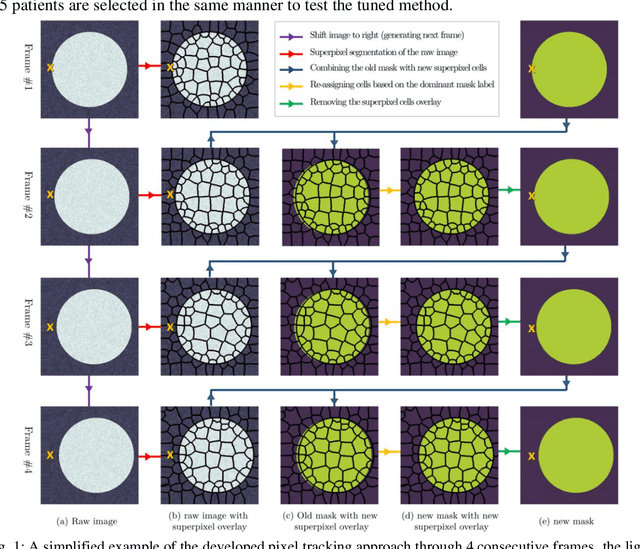
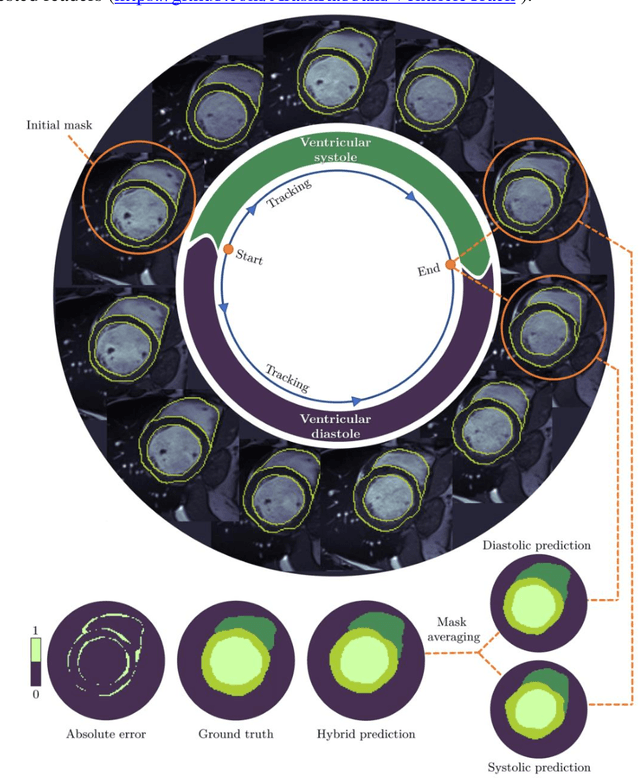
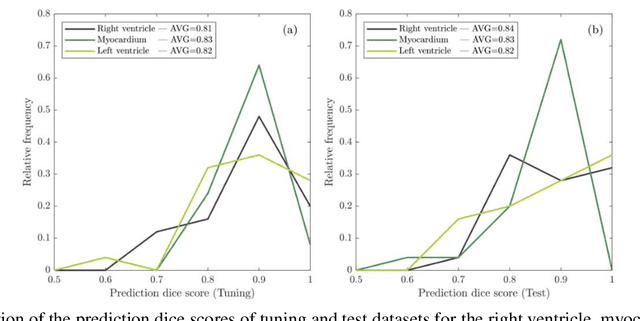
Abstract:In this study, we have tailored a pixel tracking method for temporal extrapolation of the ventricular segmentation masks in cardiac magnetic resonance images. The pixel tracking process starts from the end-diastolic frame of the heart cycle using the available manually segmented images to predict the end-systolic segmentation mask. The superpixels approach is used to divide the raw images into smaller cells and in each time frame, new labels are assigned to the image cells which leads to tracking the movement of the heart wall elements through different frames. The tracked masks at the end of systole are compared with the already available manually segmented masks and dice scores are found to be between 0.81 to 0.84. Considering the fact that the proposed method does not necessarily require a training dataset, it could be an attractive alternative approach to deep learning segmentation methods in scenarios where training data are limited.
The Fully Convolutional Transformer for Medical Image Segmentation
Jun 01, 2022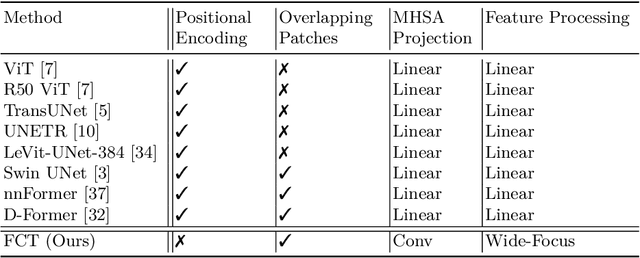
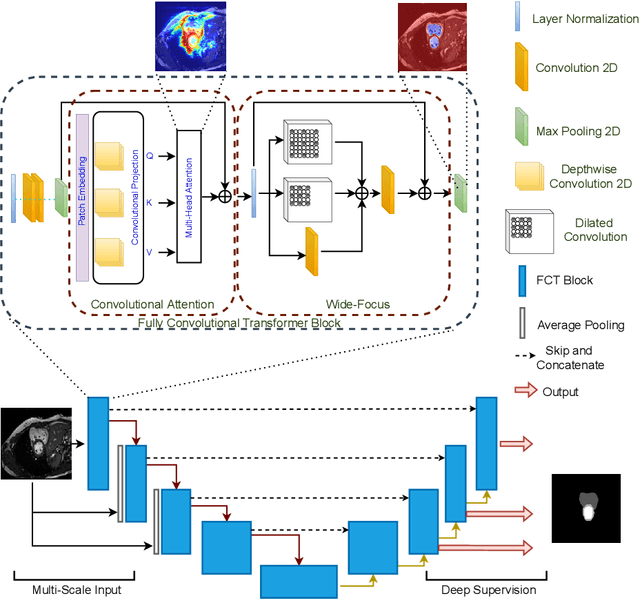
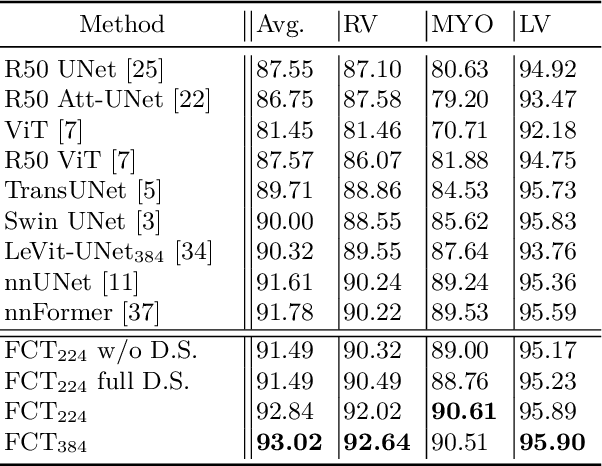
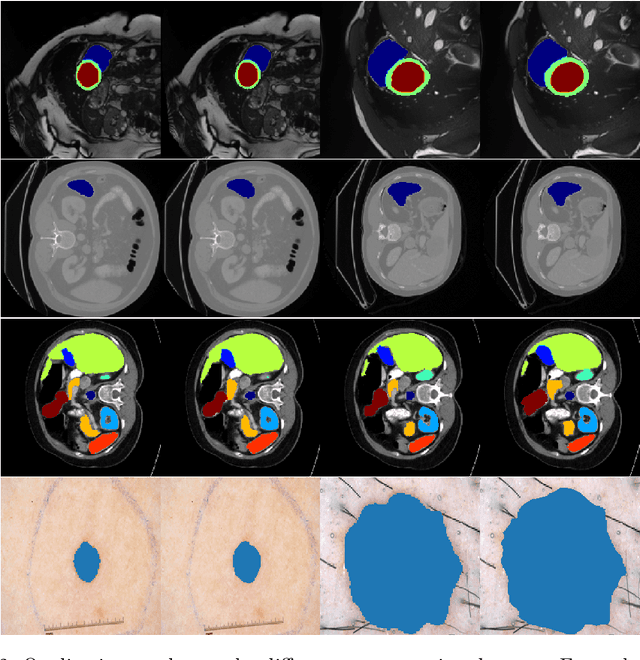
Abstract:We propose a novel transformer model, capable of segmenting medical images of varying modalities. Challenges posed by the fine grained nature of medical image analysis mean that the adaptation of the transformer for their analysis is still at nascent stages. The overwhelming success of the UNet lay in its ability to appreciate the fine-grained nature of the segmentation task, an ability which existing transformer based models do not currently posses. To address this shortcoming, we propose The Fully Convolutional Transformer (FCT), which builds on the proven ability of Convolutional Neural Networks to learn effective image representations, and combines them with the ability of Transformers to effectively capture long-term dependencies in its inputs. The FCT is the first fully convolutional Transformer model in medical imaging literature. It processes its input in two stages, where first, it learns to extract long range semantic dependencies from the input image, and then learns to capture hierarchical global attributes from the features. FCT is compact, accurate and robust. Our results show that it outperforms all existing transformer architectures by large margins across multiple medical image segmentation datasets of varying data modalities without the need for any pre-training. FCT outperforms its immediate competitor on the ACDC dataset by 1.3%, on the Synapse dataset by 4.4%, on the Spleen dataset by 1.2% and on ISIC 2017 dataset by 1.1% on the dice metric, with up to five times fewer parameters. Our code, environments and models will be available via GitHub.
On a New Improvement-Based Acquisition Function for Bayesian Optimization
Aug 21, 2018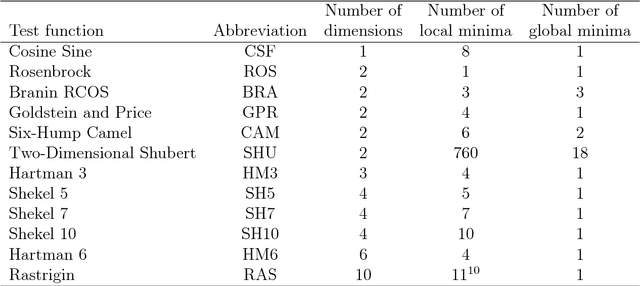

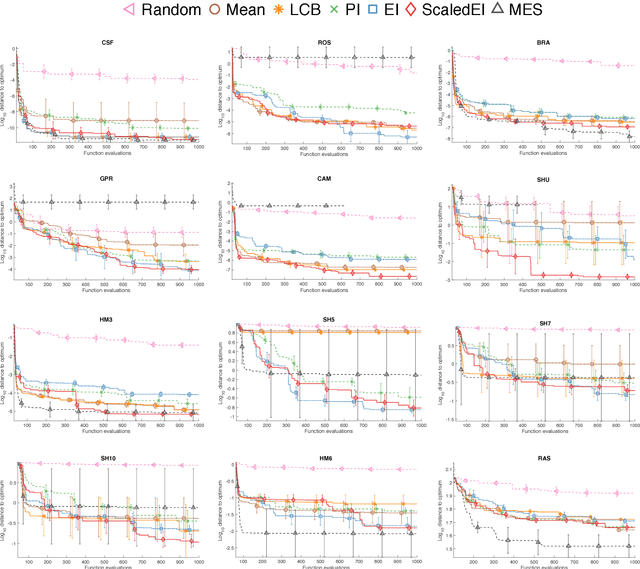
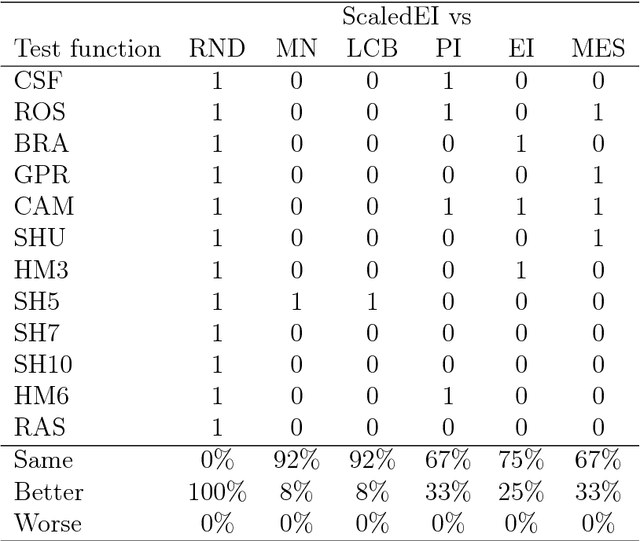
Abstract:Bayesian optimization (BO) is a popular algorithm for solving challenging optimization tasks. It is designed for problems where the objective function is expensive to evaluate, perhaps not available in exact form, without gradient information and possibly returning noisy values. Different versions of the algorithm vary in the choice of the acquisition function, which recommends the point to query the objective at next. Initially, researchers focused on improvement-based acquisitions, while recently the attention has shifted to more computationally expensive information-theoretical measures. In this paper we present two major contributions to the literature. First, we propose a new improvement-based acquisition function that recommends query points where the improvement is expected to be high with high confidence. The proposed algorithm is evaluated on a large set of benchmark functions from the global optimization literature, where it turns out to perform at least as well as current state-of-the-art acquisition functions, and often better. This suggests that it is a powerful default choice for BO. The novel policy is then compared to widely used global optimization solvers in order to confirm that BO methods reduce the computational costs of the optimization by keeping the number of function evaluations small. The second main contribution represents an application to precision medicine, where the interest lies in the estimation of parameters of a partial differential equations model of the human pulmonary blood circulation system. Once inferred, these parameters can help clinicians in diagnosing a patient with pulmonary hypertension without going through the standard invasive procedure of right heart catheterization, which can lead to side effects and complications (e.g. severe pain, internal bleeding, thrombosis).
Targeting Bayes factors with direct-path non-equilibrium thermodynamic integration
Mar 21, 2017


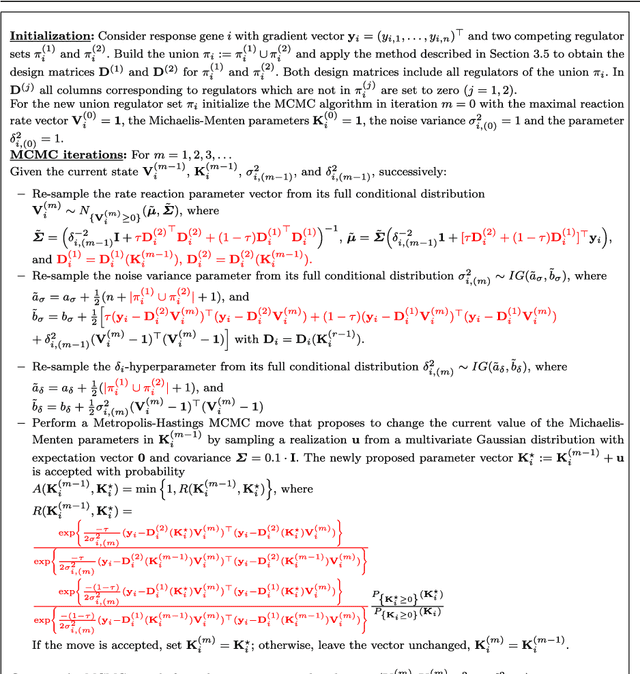
Abstract:Thermodynamic integration (TI) for computing marginal likelihoods is based on an inverse annealing path from the prior to the posterior distribution. In many cases, the resulting estimator suffers from high variability, which particularly stems from the prior regime. When comparing complex models with differences in a comparatively small number of parameters, intrinsic errors from sampling fluctuations may outweigh the differences in the log marginal likelihood estimates. In the present article, we propose a thermodynamic integration scheme that directly targets the log Bayes factor. The method is based on a modified annealing path between the posterior distributions of the two models compared, which systematically avoids the high variance prior regime. We combine this scheme with the concept of non-equilibrium TI to minimise discretisation errors from numerical integration. Results obtained on Bayesian regression models applied to standard benchmark data, and a complex hierarchical model applied to biopathway inference, demonstrate a significant reduction in estimator variance over state-of-the-art TI methods.
* Accepted for publication in Computational Statistics, 38 pages, 17 figures
 Add to Chrome
Add to Chrome Add to Firefox
Add to Firefox Add to Edge
Add to Edge